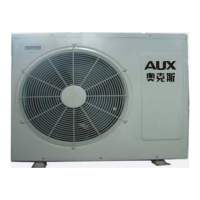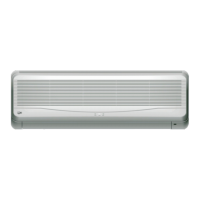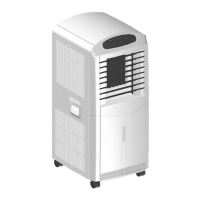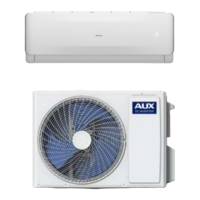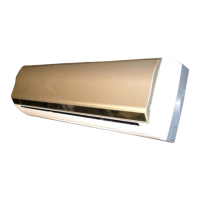AUX air conditioner service manual
3
applied in the separating process by the gas & liquid separator.
⑷Heat Energy
The heat energy of the substance, the internal energy, is the sum of the kinetic energy and potential
energy. The quantity of heat is the physics parameter for measuring the heat absorbed or released by
the physical object, and is one of the representation forms of energy. The essential of the heating
process of refrigeration is the process of transmitting heat energy. The signification of the quantity of
heat is only effective during the heat energy’s transmitting period.
The common units in measurement include Joule or Kilo-Joule (KJ). 1J means the energy in need for
rising up the physical object with the weight of 1Newton up to 1 meter height. In addition, there is
Calorie or Kilo-Cal (Kcal) as the common units applied. 1Kcal stands for the absorbed or released
quantity of heat for having the temperature of 1kg pure water to be increased or decreased by 1℃.
British thermal unit (BTU) is applied mainly in Europe or USA. 1BTU stands for the absorbed or
released quantity of heat for having the temperature of 1pound pure water to be increased or decreased
by 1℉. The conversion relation of all the above units is as below:
1kJ=1000J
1kcal=1000cal
1kcal=4.1868kJ
1BTU=0.252kcal=1.055kJ
1kcal=3.968BTU
1kJ=0.9478BTU
1W=0.86kcal/h
1HP=745.7W
1USA Refrigeration Ton(USRT)=3.024kcal/h=3576W
1 Japanese Refrigeration Ton(RT)=3320kcal/h=3860W
The relation of the temperature and the quantity of heat: The physical object’s temperature will
decrease if it releases the quantity of heat and consequently cause the increase to the ambiance
temperature. Otherwise, the physical object’s temperature will increase if it absorbs the quantity of
heat and consequently cause the decrease to the ambiance temperature. In this case, it’s easy to
understand that the principle of the heating process is the heat releasing process by the object which
increases the temperature of the ambiance medium accordingly; the principle of the refrigerating
process is the heat absorbing process by the object which decreases the temperature of the ambiance
medium accordingly.
2. The heat transmission forms
There must be a heat transmission process available either the quantity of heat shall be delivered from
one substance to the other one or the quantity of heat shall be absorbed by one object from the other
one. The heat transmission forms are consisted of heat conduction, convection and heat radiation. The
three of them normally function at the same time during the actual heat transmission process in no
spite of the single transmission form of them available only.
⑴Heat conduction
Heat conduction is one of the heat transmission forms in the form of transmitting the quantity of heat
from one object to the other one, or the heat transmission available between two contacting objects.
For example, when you hold one end of the iron bar, and the other end is on the fire, after a while,
